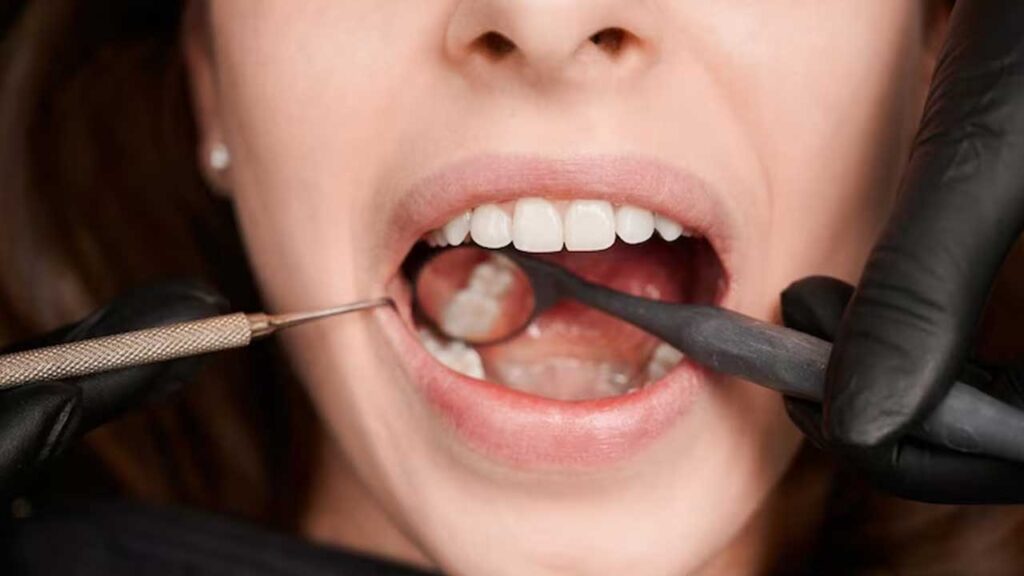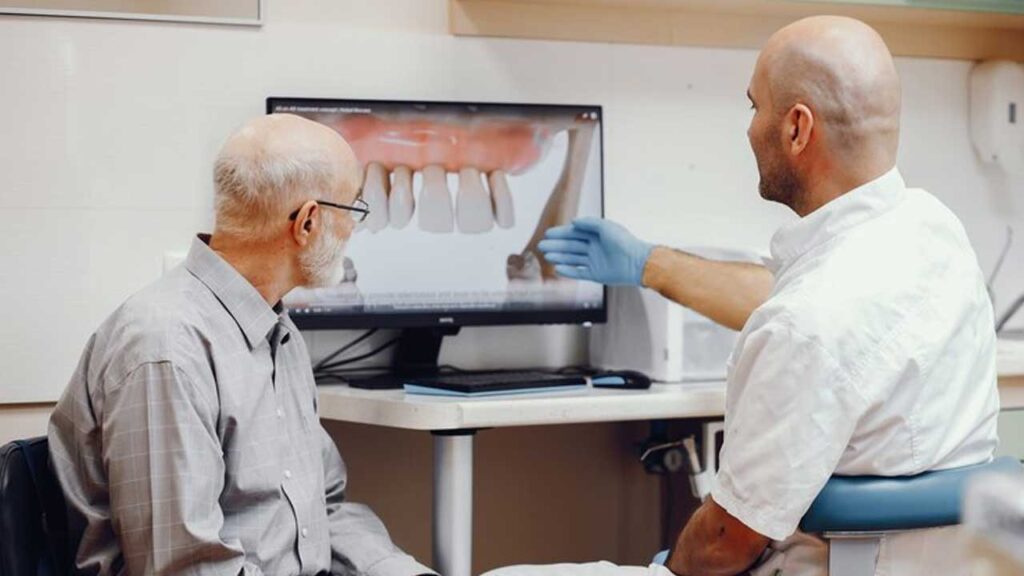Dental occlusion is the relationship between the upper and lower teeth when they come into contact during biting or chewing. It is also known as the bite or the occlusal relationship. Dental occlusion plays a vital role in the function and health of the oral cavity, as well as the overall well-being of the individual. A balanced and harmonious dental occlusion can help prevent or reduce dental problems, such as tooth wear, fracture, sensitivity, decay, pain, infection, or loss. It can also help prevent or reduce oral-systemic problems, such as temporomandibular joint disorders, headaches, neck pain, sleep apnea, or cardiovascular diseases.
However, dental occlusion is not a static or fixed condition. It can change over time due to various factors, such as growth and development, aging and wear, dental treatments and interventions, trauma and injury, habits and behaviors, or diseases and conditions. Therefore, it is important to assess and monitor dental occlusion regularly and accurately to detect any changes or abnormalities that may affect the function and health of the oral cavity or the overall well-being of the individual.

Dental occlusion testing is the process of evaluating and measuring dental occlusion using various methods and tools. It can help diagnose and treat dental problems, plan and execute dental procedures, evaluate and improve dental outcomes, and educate and motivate patients. Dental occlusion testing can be performed by dentists or dental professionals using various methods and tools, such as visual inspection, palpation, articulating paper, wax bites, face bows, articulators, mounted casts, photographs, radiographs, electromyography, jaw tracking devices, or computerized occlusal analysis systems.
However, dental occlusion testing is not a simple or straightforward task. It involves various challenges and limitations that can affect its validity and reliability. Some of these challenges and limitations are:
- Subjectivity. Many dental occlusion testing methods rely on subjective judgment or interpretation by dentists or dental professionals. This can introduce human error or bias that can affect the accuracy and consistency of dental occlusion testing results. For example, visual inspection or palpation can be influenced by personal experience or preference. Articulating paper or wax bites can be affected by pressure or moisture variations. Face bows or articulators can be affected by anatomical variations or inaccuracies.
- Invasiveness. Many dental occlusion testing methods require invasive procedures or interventions that can cause discomfort or harm to patients or dentists. This can reduce patient compliance or satisfaction and increase the risk of infection or injury. For example, impression taking or cast mounting can cause gagging or irritation. Radiographic imaging can cause radiation exposure or damage. Electromyography or jaw tracking devices can cause electrical shock or interference.
- Complexity. Many dental occlusion testing methods require complex procedures or equipment that can increase the time and cost of dental occlusion testing. This can reduce efficiency or productivity and increase overhead expenses. For example, impression taking or cast mounting require multiple steps and materials. Radiographic imaging or electromyography require specialized equipment and training. Computerized occlusal analysis systems require software and hardware installation and maintenance.
To overcome these challenges and limitations, new innovations in dental occlusion testing technology have emerged in recent years. These innovations aim to improve the accuracy, consistency, safety, comfort, convenience, and affordability of dental occlusion testing. Some of these innovations are:
- Digital impression taking and cast fabrication. Digital impression taking is the process of capturing a digital image of the teeth and oral tissues using an intraoral scanner device that emits light waves or lasers. Digital cast fabrication is the process of creating a physical replica of the teeth and oral tissues using a 3D printer device that deposits layers of resin or powder material. Digital impression taking and cast fabrication can eliminate the need for conventional impression materials and techniques that can cause discomfort or inaccuracies. They can also reduce the time and cost of dental occlusion testing by allowing faster data acquisition and transmission.
- Virtual articulation and simulation. Virtual articulation is the process of reproducing the jaw movements and occlusal contacts using a computer software program that analyzes the digital images of the teeth and oral tissues captured by an intraoral scanner device. Virtual simulation is the process of predicting the outcomes of dental treatments or interventions using a computer software program that modifies the digital images of the teeth and oral tissues according to the planned procedures. Virtual articulation and simulation can eliminate the need for physical face bows, articulators, or mounted casts that can cause inaccuracies or limitations. They can also improve the quality and safety of dental occlusion testing by allowing more precise and realistic analysis and evaluation.
- Occlusal force and pressure mapping. Occlusal force and pressure mapping is the process of measuring and displaying the magnitude and distribution of occlusal forces and pressures using a thin and flexible sensor device that is placed between the upper and lower teeth. The sensor device can detect and record the occlusal forces and pressures during various jaw movements and transmit the data to a computer software program that can visualize and analyze them. Occlusal force and pressure mapping can eliminate the need for conventional articulating paper or wax bites that can cause errors or variations. They can also enhance the accuracy and consistency of dental occlusion testing by providing quantitative and objective data.
These are some of the innovations in dental occlusion testing technology that can improve the assessment and monitoring of dental occlusion.
What Are the Benefits and Risks of Dental Occlusion Testing Technology?
Dental occlusion testing technology is the application of various methods and tools to evaluate and measure dental occlusion using digital, virtual, or sensor-based devices. It can help improve the accuracy, consistency, safety, comfort, convenience, and affordability of dental occlusion testing. However, dental occlusion testing technology is not without challenges and limitations that can affect its validity and reliability. Here are some of the benefits and risks of dental occlusion testing technology:
Benefits
Some of the benefits of dental occlusion testing technology are:
- It can provide more precise and realistic data. Dental occlusion testing technology can provide more precise and realistic data by capturing and analyzing the dynamic and three-dimensional aspects of dental occlusion. For example, digital impression taking and cast fabrication can provide more accurate and detailed images of the teeth and oral tissues. Virtual articulation and simulation can reproduce the jaw movements and occlusal contacts more realistically. Occlusal force and pressure mapping can measure and display the occlusal forces and pressures more quantitatively.
- It can reduce human error or bias. Dental occlusion testing technology can reduce human error or bias by providing objective and standardized data that are not influenced by subjective judgment or interpretation. For example, digital impression taking and cast fabrication can eliminate the errors or variations caused by conventional impression materials or techniques. Virtual articulation and simulation can eliminate the inaccuracies or limitations caused by physical face bows, articulators, or mounted casts. Occlusal force and pressure mapping can eliminate the errors or variations caused by conventional articulating paper or wax bites.
- It can improve patient compliance or satisfaction. Dental occlusion testing technology can improve patient compliance or satisfaction by providing a more comfortable and pleasant dental procedure that can reduce discomfort or harm. For example, digital impression taking and cast fabrication can eliminate the discomfort or irritation caused by conventional impression materials or techniques. Virtual articulation and simulation can eliminate the need for invasive procedures or interventions that may cause pain or injury. Occlusal force and pressure mapping can eliminate the need for excessive pressure or force that may cause sensitivity or damage.
Risks
Some of the risks of dental occlusion testing technology are:
- It can have technical issues or failures. Dental occlusion testing technology can have technical issues or failures that can affect its function and performance. For example, digital impression taking and cast fabrication can have problems with data acquisition, transmission, or storage. Virtual articulation and simulation can have problems with software compatibility, calibration, or update. Occlusal force and pressure mapping can have problems with sensor accuracy, durability, or hygiene.
- It can have ethical or legal implications. Dental occlusion testing technology can have ethical or legal implications that can affect its use and regulation. For example, digital impression taking and cast fabrication can raise issues of data privacy, security, or ownership. Virtual articulation and simulation can raise issues of informed consent, liability, or malpractice. Occlusal force and pressure mapping can raise issues of patient autonomy, confidentiality, or disclosure.
- It can have limited availability or accessibility in some areas or situations. Dental occlusion testing technology can have limited availability or accessibility in some areas or situations where it is not widely used or available, such as rural areas, developing countries, emergency situations, or mobile clinics. This can make it difficult or impossible to use dental occlusion testing technology when needed, which can compromise the quality and safety of dental occlusion testing. To prevent this, you should always have a sufficient supply of dental occlusion testing technology in your practice, and seek alternative sources or solutions if needed.
These are some of the benefits and risks of dental occlusion testing technology that you need to be aware of before using it.
Dental occlusion is the relationship between the upper and lower teeth when they come into contact during biting or chewing. It plays a vital role in the function and health of the oral cavity, as well as the overall well-being of the individual.
Dental occlusion testing is the process of evaluating and measuring dental occlusion using various methods and tools. It can help diagnose and treat dental problems, plan and execute dental procedures, evaluate and improve dental outcomes, and educate and motivate patients.
However, dental occlusion testing involves various challenges and limitations that can affect its validity and reliability.
To overcome these challenges and limitations, new innovations in dental occlusion testing technology have emerged in recent years. These innovations aim to improve the accuracy, consistency, safety, comfort, convenience, and affordability of dental occlusion testing. Some of these innovations are:
- Digital impression taking and cast fabrication. These are methods of capturing a digital image of the teeth and oral tissues using an intraoral scanner device and creating a physical replica of them using a 3D printer device.
- Virtual articulation and simulation. These are methods of reproducing the jaw movements and occlusal contacts using a computer software program and predicting the outcomes of dental treatments or interventions using the same program.
- Occlusal force and pressure mapping. This is a method of measuring and displaying the magnitude and distribution of occlusal forces and pressures using a thin and flexible sensor device.
By reading this article, you learned about the innovations in dental occlusion testing technology and how they can improve the assessment and monitoring of dental occlusion.


1 thought on “Innovations in Dental Occlusion Testing Technology”